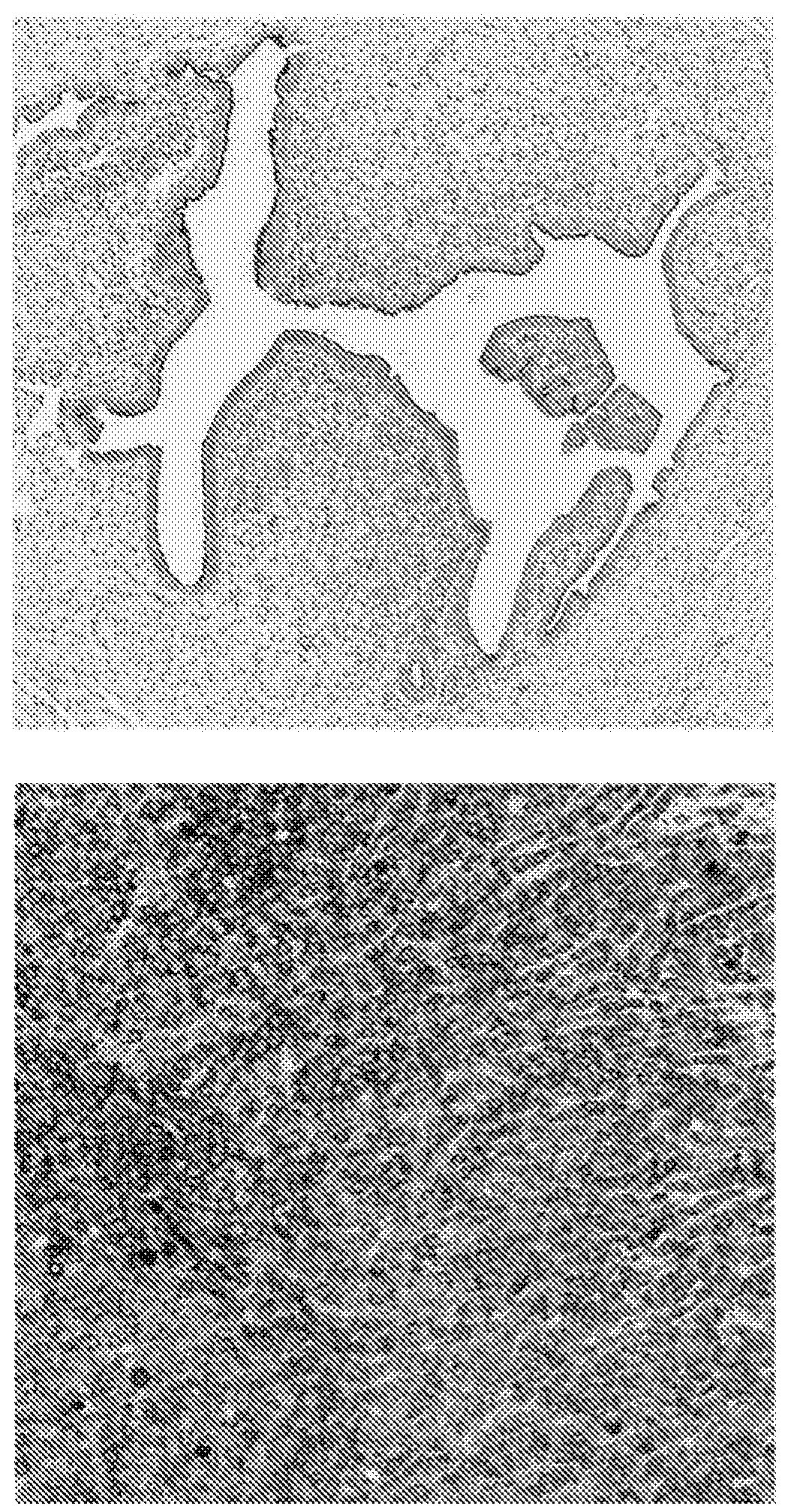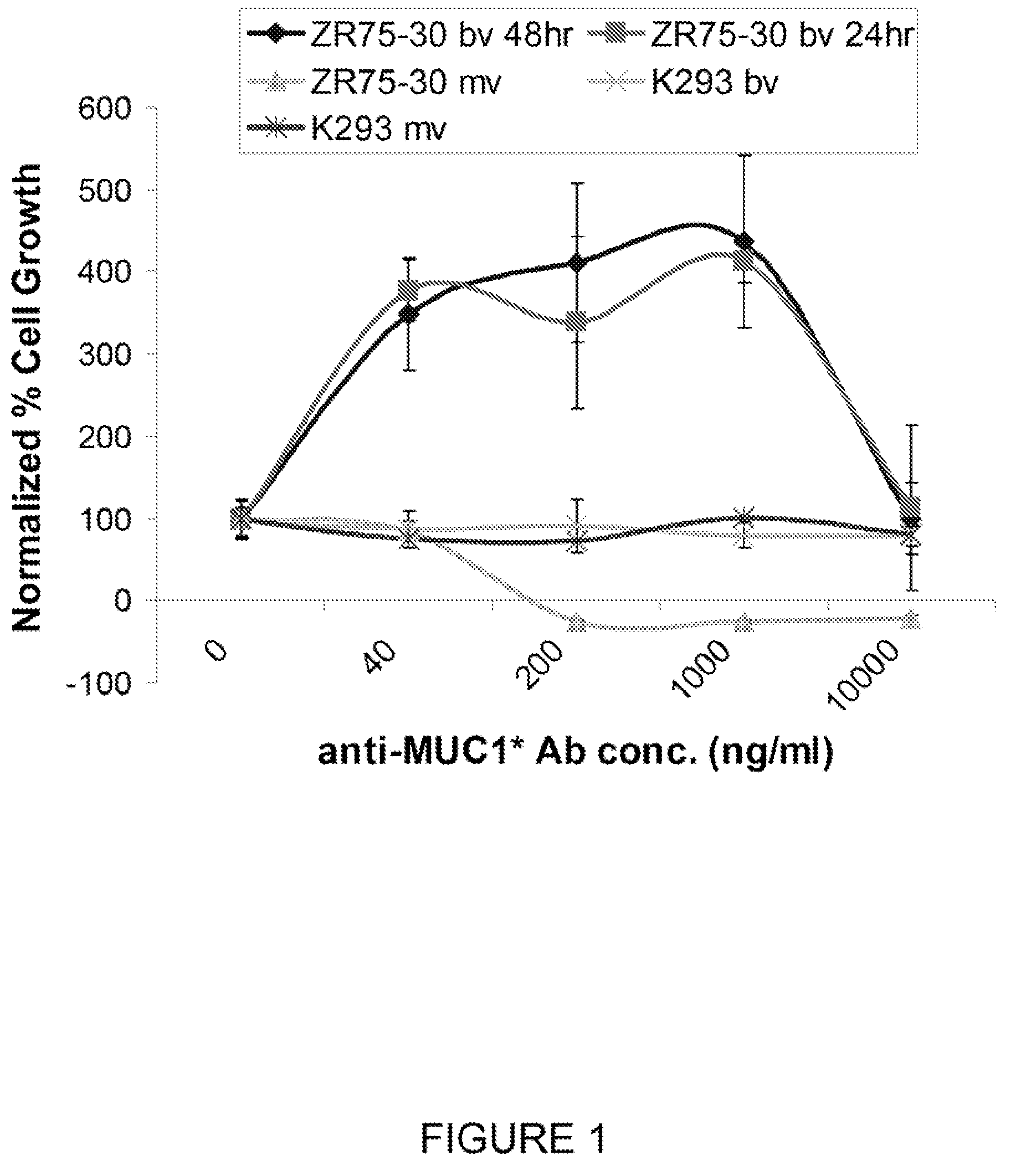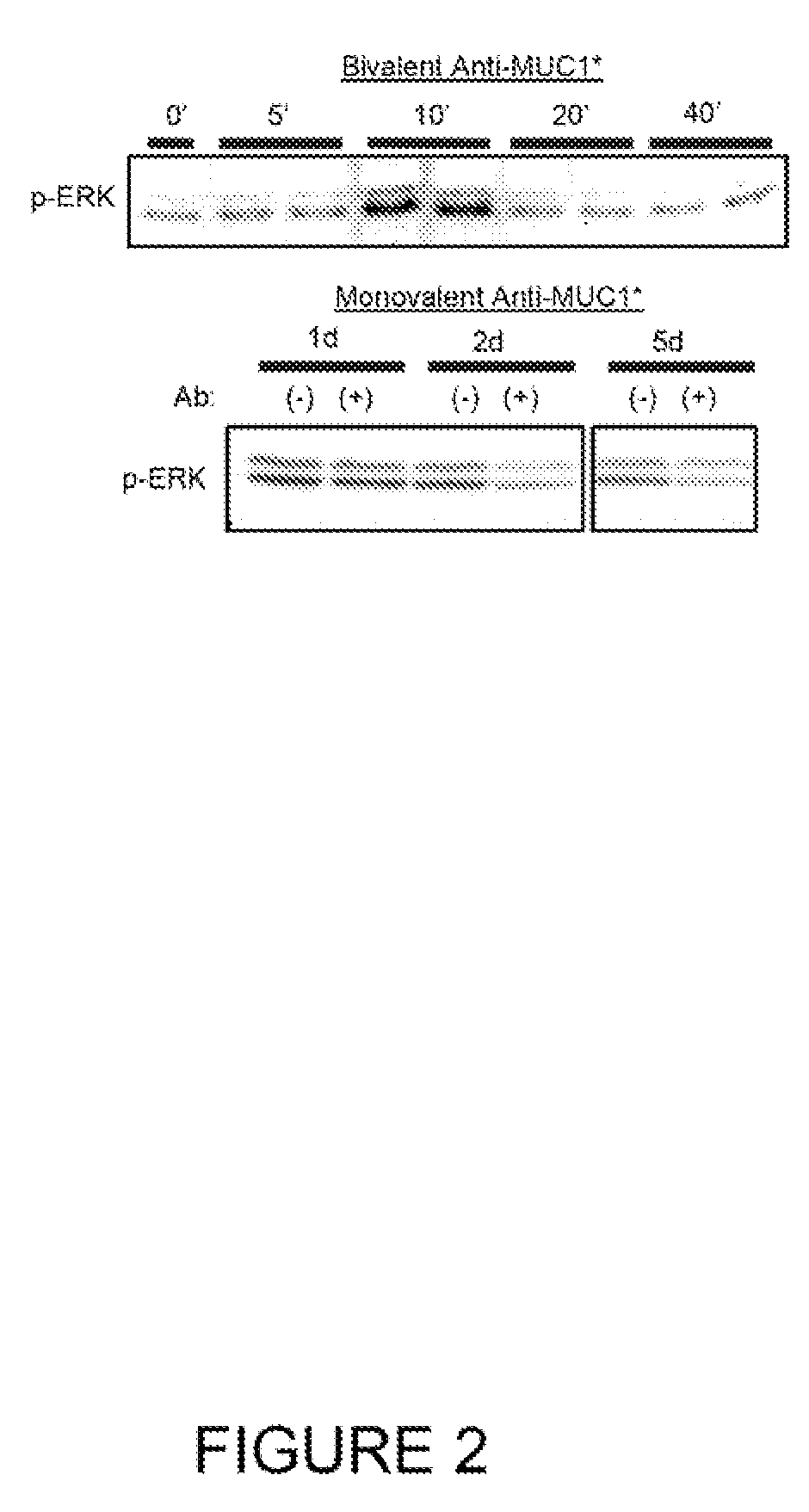Early diagnosis and treatment of drug resistance in muc1-positive cancer
a muc1-positive cancer and early diagnosis technology, applied in the field of early diagnosis and treatment of drug resistance in muc1-positive cancer, can solve the problems of bleak prognosis of these women, achieve the effect of effectively inhibiting, increasing expression level, and restoring the therapeutic effect of herceptin®
- Summary
- Abstract
- Description
- Claims
- Application Information
AI Technical Summary
Benefits of technology
Problems solved by technology
Method used
Image
Examples
example 1
Antibody Production
[0138]Antibodies that bind to the MGFR portion of the MUC1 receptor, referred to herein as anti-PSMGFR are described in detail in PCT Application No. PCT / US2004 / 027954 (WO 2005 / 019269), in particular in Example 8 of the PCT Application. Antibody production is also described in PCT Application No. PCT / US2005 / 032821, in particular in Example 2 of the PCT Application. Inventive antibodies were raised against the PSMGFR portion of the MUC1 receptor, in particular nat-PSMGFR or var-PSMGFR shown in Table 1 using standard methods of antibody production. Rabbit polyclonal antibodies were produced and purified by column chromatography in which the immunizing peptide was attached to the chromatography column beads. The antibodies, anti-nat-PSMGFR and anti-var-PSMGFR, were shown to specifically and sensitively bind to the MGFR portion of the MUC1 receptor.
example 2
Preparation of Tissue Specimens
[0139]Tissue specimens pictured in FIGS. 7-15 were prepared using methods previously described in PCT Application No. PCT / US2005 / 032821, in particular in Example 3 of the PCT Application. Formalin fixed, paraffin embedded tissue specimens were tested for reactivity to two antibodies that recognize different epitopes on the MUC1 receptor: 1) a rabbit polyclonal antibody, anti-PSMGFR, that binds to the PSMGFR portion of the MUC1 receptor that remains attached to the cell surface after receptor shedding; and 2) a commercially available mouse monoclonal, VU4H5 (Santa Cruz, Calif.) that binds to a sequence in the tandem repeat section of the receptor. One section from each block was stained with hemotoxin and eosin (H&E) to aid in assessing tumor grade. A table summarizing the results of larger group of tissue specimens including pathologist's score for each is shown as FIG. 18. MUC1* staining refers to staining with rabbit polyclonal anti-MUC1* and MUC1 st...
example 3
Making HERCEPTIN® Resistant Cells
[0140]Two pools of the breast tumor line BT474 (ATCC) were made resistant by culturing in RPMI medium containing HERCEPTIN® at a final concentration of 1 μg / ml for 8 weeks. HERCEPTIN® resistance was then verified. Briefly, BT474 cells, and resistant cells (BTRes1 and BTRes2) were plated in 96 well plates at 10,000 cells / well, six wells per condition. The following day, zero hour counts were taken, and medium was changed in the remaining wells to RPMI containing HERCEPTIN® to final concentrations of 0, 0.01, 0.03, 0.1, 0.3, 1, and 3 ug / ml. Three days later, the remaining cells were counted using a hemocytometer. BTRes 1 and BTRes2 cells showed no effects of HERCEPTIN® at these concentrations, while BT474 cells reached 50% growth inhibition at a HERCEPTIN® concentration between 0.1 and 0.3 μg / ml.
PUM
| Property | Measurement | Unit |
|---|---|---|
| Fraction | aaaaa | aaaaa |
| Fraction | aaaaa | aaaaa |
| Electrical resistance | aaaaa | aaaaa |
Abstract
Description
Claims
Application Information
 Login to View More
Login to View More - R&D
- Intellectual Property
- Life Sciences
- Materials
- Tech Scout
- Unparalleled Data Quality
- Higher Quality Content
- 60% Fewer Hallucinations
Browse by: Latest US Patents, China's latest patents, Technical Efficacy Thesaurus, Application Domain, Technology Topic, Popular Technical Reports.
© 2025 PatSnap. All rights reserved.Legal|Privacy policy|Modern Slavery Act Transparency Statement|Sitemap|About US| Contact US: help@patsnap.com



